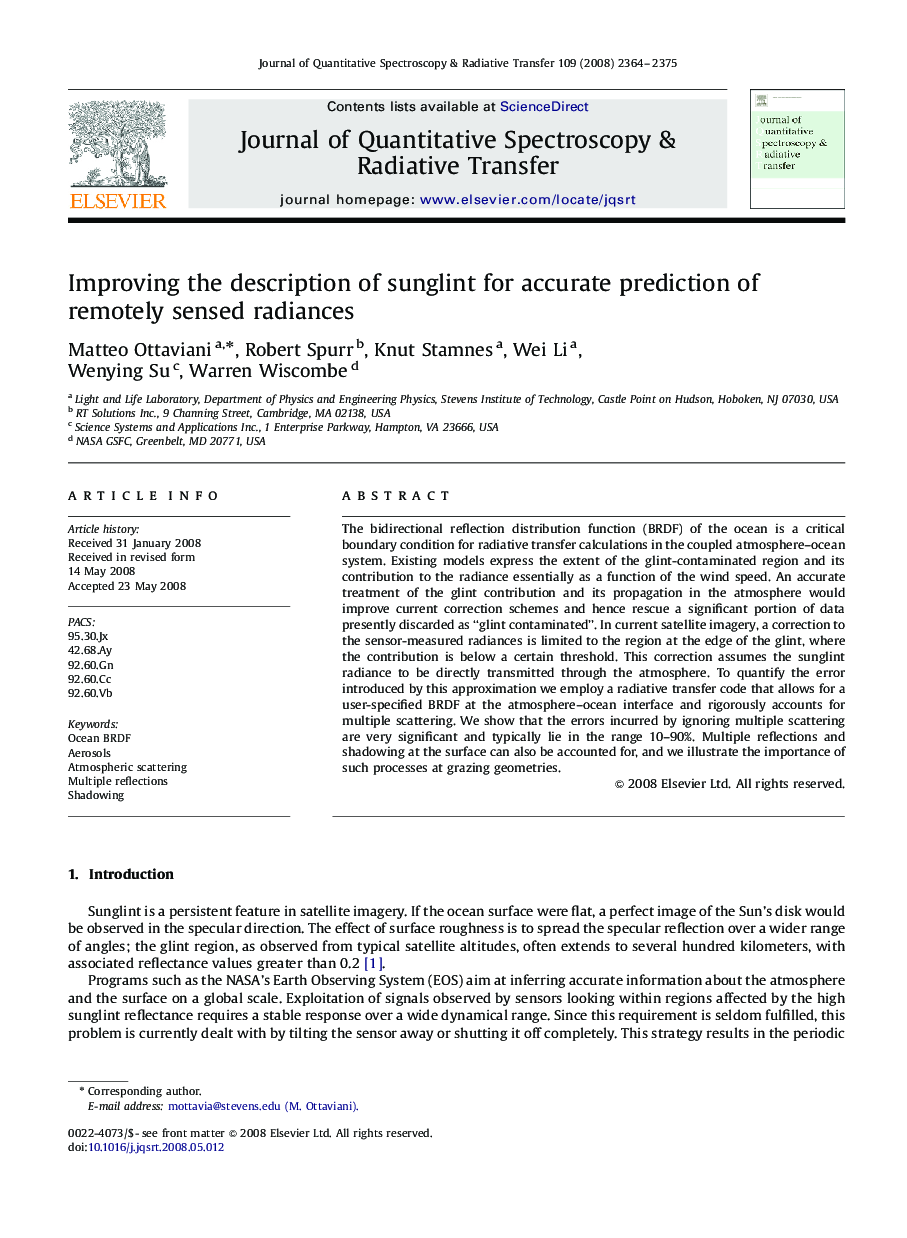| کد مقاله | کد نشریه | سال انتشار | مقاله انگلیسی | نسخه تمام متن |
|---|---|---|---|---|
| 5430376 | 1397399 | 2008 | 12 صفحه PDF | دانلود رایگان |

The bidirectional reflection distribution function (BRDF) of the ocean is a critical boundary condition for radiative transfer calculations in the coupled atmosphere-ocean system. Existing models express the extent of the glint-contaminated region and its contribution to the radiance essentially as a function of the wind speed. An accurate treatment of the glint contribution and its propagation in the atmosphere would improve current correction schemes and hence rescue a significant portion of data presently discarded as “glint contaminated”. In current satellite imagery, a correction to the sensor-measured radiances is limited to the region at the edge of the glint, where the contribution is below a certain threshold. This correction assumes the sunglint radiance to be directly transmitted through the atmosphere. To quantify the error introduced by this approximation we employ a radiative transfer code that allows for a user-specified BRDF at the atmosphere-ocean interface and rigorously accounts for multiple scattering. We show that the errors incurred by ignoring multiple scattering are very significant and typically lie in the range 10-90%. Multiple reflections and shadowing at the surface can also be accounted for, and we illustrate the importance of such processes at grazing geometries.
Journal: Journal of Quantitative Spectroscopy and Radiative Transfer - Volume 109, Issue 14, September 2008, Pages 2364-2375